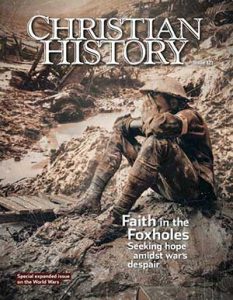Although three years old, this account in The Christian Post of Father Jacques Murad, a Christian Syrian priest, is interesting as an example of the threats Christians experience in the Mid East. ISIS Hostage Feels “Born Again” After Witnessing Christian Captives’ Strong Faith. He tells of hundreds of Christians who endure captivity and risk death for refusing to convert to Islam.
Christian Captives in North Africa
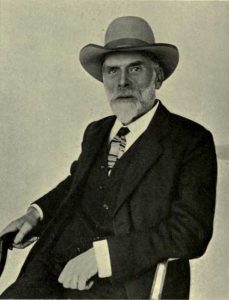
[Robert Bridges, from Poetical Works of Robert Bridges, Excluding the eight dramas. Henry Frowde / Oxford University Press, 1912—public domain, Wikimedia File:Robert Bridges 1912.jpg]
During the Middle Ages, Arabs, Moors, and Berbers captured many Christians and worked them as slaves or held them for ransom in North Africa. In 1415 the Portuguese captured the city of Ceuta, which for centuries gave them a toe-hold in North Africa. Robert Bridges, poet laureate of England from 1913 to 1930, made use of these historical facts in setting a blank-verse drama titled The Christian Captives. The story is a tragedy of thwarted love in five acts.
The desire of the King of Fez to regain Ceuta after the Portuguese invade Tangier is a central theme of the play. The Christian captives appear in the story as a chorus, introducing an Islamic princess to Christianity. They serve as a bargaining chip in negotiations between the Christians and the Muslims in an otherwise improbable tale. Continue reading “Christian Captives in North Africa”
Kudos to Kaylena’s War Story
Issue 121 of Christian History, Faith in the Foxholes, mentions some of the captives who are also featured on this site. Among its articles is Kaylena Radcliffe’s A war story: “There is no pit so deep God’s love is not deeper still,“ which won second place in its category at the recent Evangelical Press Association meeting. Follow the link and read for yourself how two women were bound by suffering in World War II.
A Magazine about Prisoners
A few months ago, Christian History published issue #123, devoted to Christians in prison. Although we mentioned it on Facebook, we’ve been remiss calling attention to it on this site. Some of the material from these pages made its way into the magazine as well as much new material. Preview a copy below, and order it for yourself at Captive Faith in the Christian History Institute store. One of its articles, “Paradoxes of Prison,” by this site’s webmaster, even won an award from the Evangelical Press Association.
Dan Baumann, prisoner for faith
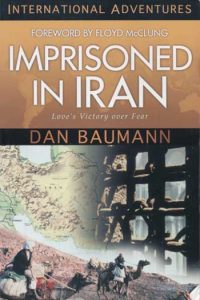
Dan Baumann was arrested in Iran while attempting to establish contacts that could be developed for future Christian work. Held in Evian prison, he was abused during interrogation. Imprisoned in Iran, one of the International Adventures series, tells his story. I do not want to give away too much of the content as I feel the book deserves a full read.
Continue reading “Dan Baumann, prisoner for faith”
Warning to the condemned
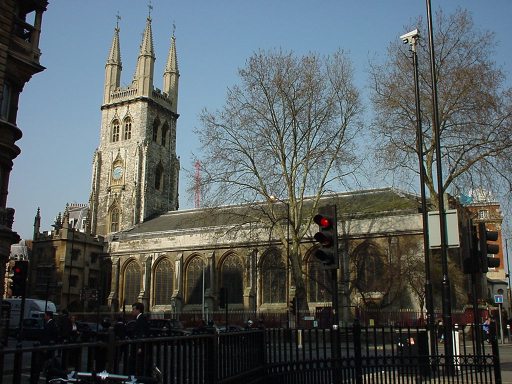
St Sepulcher’s Church by User Lonpicman — http://en.wikipedia.org/wiki/Image:StSepulchresChurch.jpg, [CC BY-SA 3.0]
By Dan Graves
Here is another tidbit from Chamber’s Book of Days. Near Newgate prison in London was a parish church bearing the name St Sepulchre’s. On the 8th of May 1705, Robert Dowe gave £50 to the vicar and church wardens stipulating Continue reading “Warning to the condemned”
Angola prison and the communion of saints
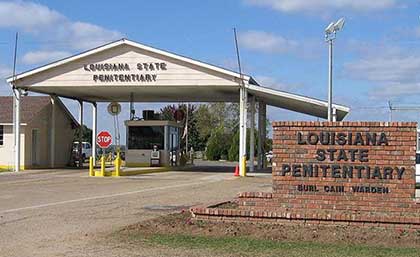
[The entrance to the Louisiana State Penitentiary – The placard says “Louisiana State Penitentiary” and “Warden Burl Cain”—Angola Prison / [CC-BY-SA 2.0] Wikimedia File:LSPEntrance-.jpg]
by Rhonda Mawhood Lee (originally appeared at Faith & Leadership (used by permission).
FOR MORE ARTICLES ABOUT CHRISTIANS IN PRISON, READ CHRISTIAN HISTORY #123, CAPTIVE FAITH: PRISON AS A PARISH.
Raymond Marler, a plumber, pipe fitter and welder, died at age 59. He considered welding “a noble trade and often spoke with pride about his aunt, who was one of a cadre of female welders who filled traditional male roles in armament factories during World War II.” Continue reading “Angola prison and the communion of saints”
Cruel treatment of debtors
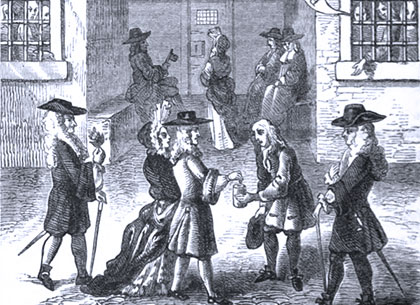
Visitors in the courtyard of the Fleet, Chamber’s Book of Days, 1863.
By Dan Graves
Recently we featured an excerpt from Chamber’s Book of Days on forced marriages at the Fleet prison. Here is another harrowing tale from Chamber’s about that terrible prison.
African Prisoners
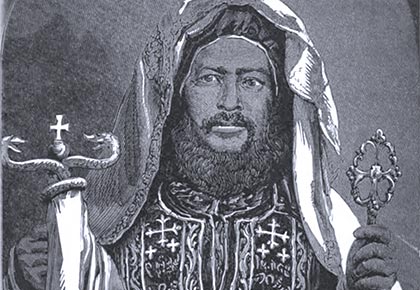
Abuna Salama, Metropolitan of the Ethiopian Orthodox Church. Henry A. Stern, Wanderings Among the Falashas in Abyssinia (London: Wertheim, Macintosh, and Hunt, 1862) p.137.
By Dan Graves
In the pages of Captive Faith we have featured only one African prisoner—Perpetua—and she was of European extraction. This has not been by design or by oversight, but because our focus is on prisoners who produced poems, letters, Scripture, court transcripts, or biographies during jail time or because of being jailed, or whose prison story became part of God’s word.*
This does not mean that African Christians have not had experience of prison. Here are a few of their stories. Continue reading “African Prisoners”
Softening a Desperate Place

Murals in Philadelphia’s Eastern State Penitentiary.
By Dawn Moore
On a recent Sunday afternoon, my husband and I were looking for something fun to do with our daughter Susie and her friend David. It was raining, so plans to stroll the local arboretum were tabled. Susie is an avid advocate for prison reform and delighted to explore historic Eastern State Penitentiary (ESP) in Philadelphia. I mostly wanted to see the historic architecture and learn a bit of history in a nice low-key way, without undue challenge to my comfortable suburban mindset.
I wasn’t disappointed in my quest for fascinating architecture, but our first steps inside quickly told me this would be a challenging afternoon. Continue reading “Softening a Desperate Place”

